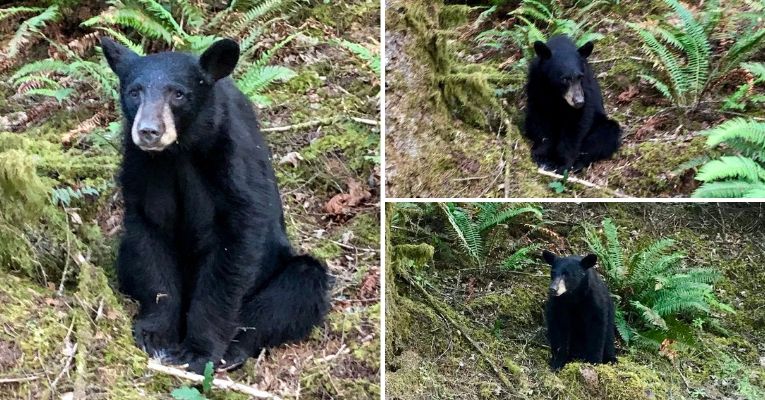Animals
Officials Shot and Killed a Baby Bear Because Tourists Fed It Too Much Food
The baby black bear had grown quite accustomed to treats from humans.

(TMU) — Anyone that has spent a decent amount of time exploring the great outdoors is likely familiar with the old adage “leave no trace.” What many probably don’t realize is that Leave No Trace is actually a code of ethics that includes seven important principals. And one of those principles is to respect wildlife.
There are many ways in which one can respect—and likewise disrespect—the local wildlife when enjoying all that this planet has to offer. And some of those ways are, unfortunately, a bit more common sense to some than to others.
Take, for example, visitors to Scoggins Valley Park in Oregon. Parkgoers—who were acting more like they were in a petting zoo than a Washington County park—started getting a little too friendly with a local baby black bear.
Earlier this month, police were alerted after the baby bear began posing for photos with visitors to the park. The Washington County Sheriff’s Office and wildlife officials at Oregon Department of Fish began receiving calls on June 4 about the male black bear and were forced to intervene last week, after being informed that the bear was drawing huge crowds of people to an area near Hagg Lake on June 11.
The following day, The Washington County Sheriff tweeted their intent to move the bear, instructing visitors to avoid the area of “Boat Ramp A.”
Deputies are working to get this bear cub near Hagg Lake to go back into the woods… please stay away from the area near Boat Ramp A. pic.twitter.com/tI8m5yTbyk
— Washington County Sheriff’s Office (@WCSOOregon) June 13, 2019
The sheriff’s department’s attempts were futile, however. The 100lb baby bear returned to the same area the following day, having grown quite accustomed to interaction with—and treats from—humans.
As a result, the bear was shot and killed by officials the next day.
While that may seem a shocking and drastic response to such a situation, officials, along with a wildlife biologist, did all they could to intervene and help the bear. Kurt Licence, a wildlife biologist, attempted to trap the baby bear in order to relocate him. During the ordeal, the bear was found with heaps of human food that included trail mix and sunflower seeds.
According to reports, the bear didn’t run from wildlife officials during their attempts to remedy the situation. That fact alone indicates that this bear—thanks to tourists who weren’t coming close practicing the seven principles of Leave No Trace—had become too friendly with humans. And when that happens, the bear becomes a danger to humans and is ineligible for relocation.
Licence said of the bear’s death:
This is a classic example of why we implore members of the public not to feed bears. While the individuals who put food out for this bear may have had good intentions bears should never, ever be fed.
It was very clear that the animal was way too habituated. With that information, it was a human health and safety risk, and we had to remove it.”
Not only does feeding bears pose a potential risk to humans if the bear becomes too friendly, feeding wildlife can reduce their ability—and willingness—to hunt for the foods they would otherwise naturally be consuming. And human food isn’t meant for wild animals. Much of what we eat as humans isn’t actually good for us, so it’s probably even worse for wild animals, like the baby bear in Scoggins Valley Park.
Licence concluded:
It’s never a good idea to feed wild animals. They are perfectly capable of fending for themselves, and it’s always better to leave them alone and enjoy them from a safe distance.”
By Emma Fiala | Creative Commons | TheMindUnleashed.com
Typos, corrections and/or news tips? Email us at Contact@TheMindUnleashed.com
